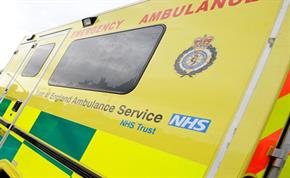There are a significant number of reversing-related vehicle accidents each year at the Trust, and recently more than normal, which are often costly to the organisation and impact on service delivery.
The general advice below is meant as a reminder of ‘best practice’ regarding reversing. It is not exhaustive but highlights some of the elements that are sometimes overlooked or forgotten whilst at work.
- Plan your manoeuvre: Look around the area to find the best location to turn the vehicle. Look out for obstacles and hazards.
- Be seen back: Whenever possible a second person should assist the driver in any reversing manoeuvre. When assisting, don’t wait to be asked to give help and when driving, don’t be afraid to ask the second person to get out of the vehicle. If someone isn’t available to help, check to see if there is another person who could assist, e.g. police officer, fire fighter or member of the public.
- Communicate: When being seen back, talk to each other. Plan where you are going initially and wind down windows so that instructions/questions can be shouted back and forth. Use the hand signals demonstrated on the driving course. If you are not sure of these, contact your DLO or the driver training unit.
- Observe: Look all around you, not just behind you. Wait for other road users. Stop, get out and have a look if you are not 100% sure of what’s behind you. Remember the ‘swing’ of the nose of the vehicle when reversing. Think about the height of the vehicle as well as length, overhanging gutters, trees or canopies can be missed. The tilt of the vehicle also needs to be considered, especially when reversing in drives etc.
- Don’t rush: Drive slowly and don’t be pressurised into rushing the manoeuvre by other road users. The slower you manoeuvre, the more time you have to correct any miscalculations.
- Be safe: The person assisting should wear high visibility clothing whilst helping the driver. If you are driving and you lose sight of your assistant or any other hazard, stop immediately and investigate before proceeding.
- Report any problems: If you do make contact with an object, make sure you report it appropriately and discharge any duty you may have under the Road Traffic Act for reporting damage/injuries.
If you have any queries on the above or any other driving issue, please contact either your DLO or the driver training unit.
Published 8th October 2014
